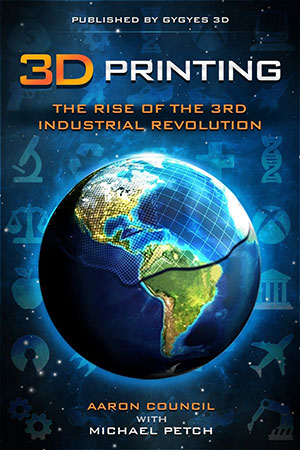The world of 3D printing moves so incredibly fast and its influence is spreading so rapidly that sometimes it just makes your head spin to consider all the possible implications of what many are calling the third industrial revolution, possibly the ultimate industrial revolution.
In Italy we have a very common proverb that translated says, more or less, that “there is never a two without a three.” The meaning behind this proverb is that whenever you have two similar events, or two entities, or two objects (or two dimensions), there is bound to be a third one. It also implies that the third one is final: “quadrilogies” are not contemplated.
So is 3D printing really the third and ultimate revolution of industrial production? The authors of a new book, now available on Amazon, seem to think so and are set to prove it by exploring and describing all fields in which 3D printing technologies promise to go mainstream as rapidly as 2014, showing that the reality we are facing is now rapidly pushing science fiction aside.
Authors Aaron Council, founder of the Gyges.com online community, and Michael Petch, CEO of Black Dog Consulting, have collected their ideas and experiences in the 3D printing arena in a rather linearly structured text that runs through the history of 3D printing, addressing all the primary fields additive manufacturing technologies have so far had an impact on, or promise to in the near future.

However, the book does start with aspects that are closer to everyday experience, such as the use of Xbox Kinects, the 3D videocamera commonly used for vidoegaming, as a 3D scanner and 3D vision system. It addresses issues such as 3D printing adoption by the fashion industry as well as other more controversial issues that raise concerns such as the possibility to 3D print guns.
The authors, like many others, are not blind to the myriad issues that humanity needs to solve before developing a truly sustainable society through the use and evolution of 3D printing. Their hope, like my own, is that in spite of current economic and military crisis escalations, 3D printing may help us find a way to counter the natural human tendency to ravage the planet’s resources and concentrate wealth in the the hands of a few.
In this way, the old Italian proverb — while accurately foreseeing a Third Industrial Revolution, the revolution of the third dimension — may be proven wrong as far as global conflicts are concerned.


